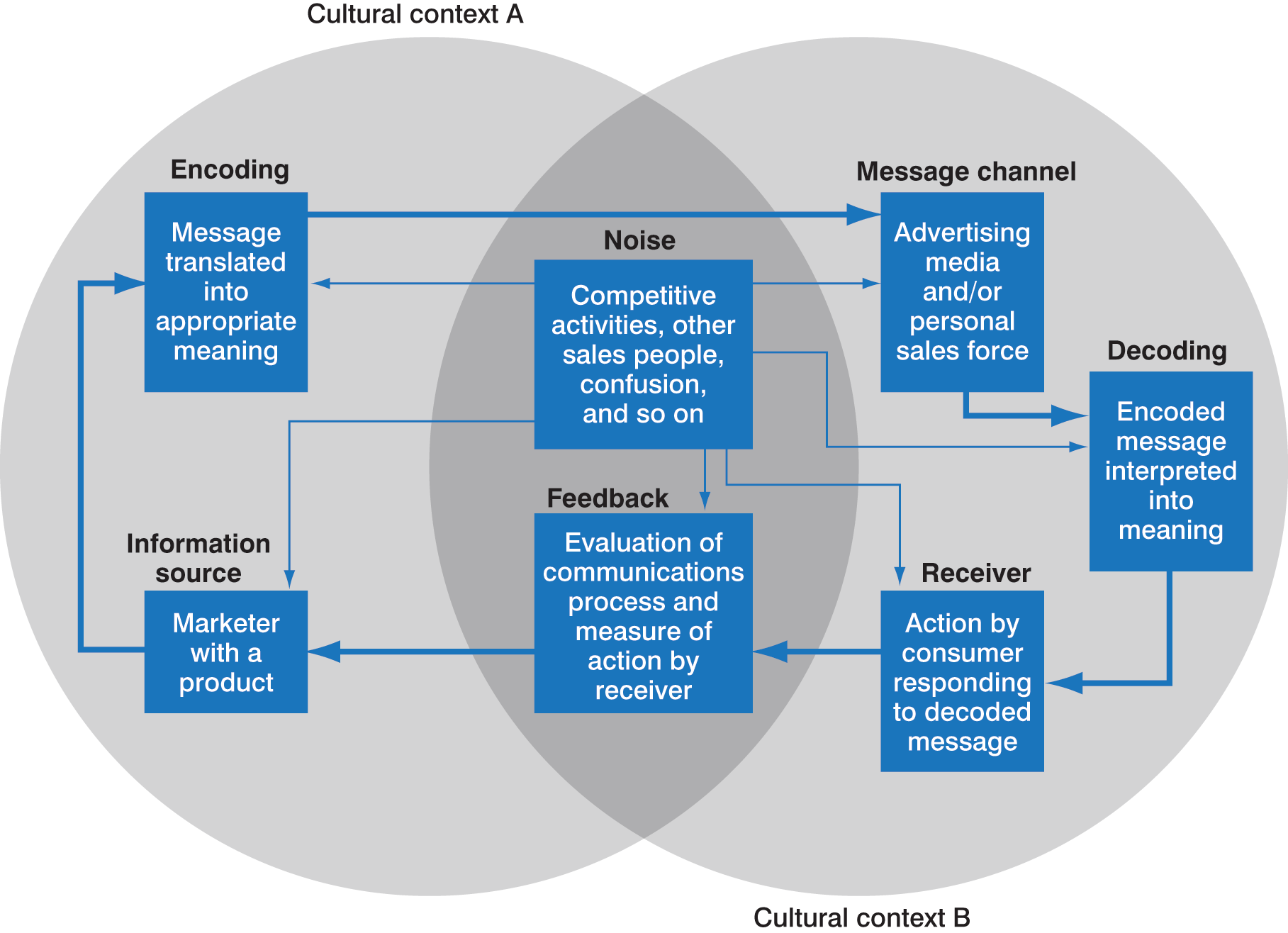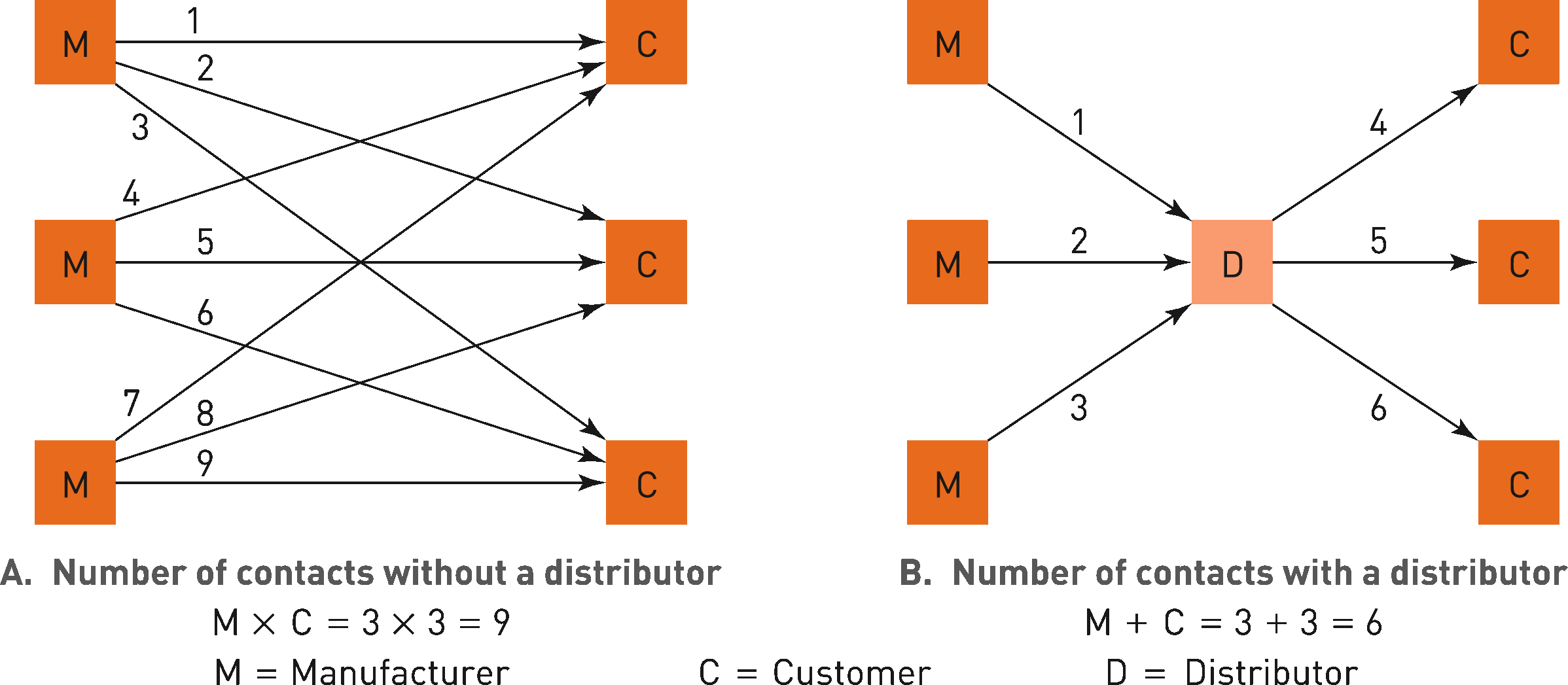Introduction
The purpose of this essay is to discuss the key arguments of the debate on standardisation vs. adaptation, the advantages and disadvantages of both sides of the contention to discover the most appropriate argument for the international market environment for the twenty first century.
According to Madar and Neacşu (2010), the raging debate underpins the argument on removing cross border barriers to investment to ease the production and selling of goods or tailoring products to suit different cultural orientations. IKEA and McDonald’s are some of the best examples of companies which have integrated standardisation and adaptation respectively in different market environments to gain competitive advantage.
According to Jeannet and Hennessey (2004), the outstanding success of Coca-Cola in the global market is because of its standardisation marketing strategy, which consists of defined uniform standards for operating in multicultural, technological, geographic, demographic, and legal environments (Czinkota & Ronkainen 2010).
According to studies by Czinkota and Ronkainen (2007), Coca Cola has worked hard to integrate the four 4Ps of product, price, place, and promotion into its marketing strategy with carefully toned messages to physiologically influence the target markets, creating a global corporate image.
The company’s executives understand quite well that international and national market environments change with changing market attributes creating a universal and diachronic existence. That has made Coca Cola to slightly modify its products based on the elements of standardisation to competitively position its products in the market (Gomez, 2013; Czinkota & Ronkainen, 2007; Jeannet & Hennessey (2004).
Key arguments of standardisation vs adaptation debate
Standardisation is defined as “the process of extending and effectively applying domestic target-market-dictated product standards tangible and/or intangible attributes – to markets in foreign environments” (Medina & Duffy 1998, p. 56).
According to Burt, Johansson and Thelander (2011), standardisation makes firms increase profitability and improve their competitive posture through economies of scale. Success stories of firms from the South East Asia which operate in markets with dissimilar consumer behavior improve the features of their product offerings as a strategic decision.
The firms rely on modernity, cultural leadership, aspirations and the confidence of the people to market their products. The South Korea and Beijing Olympic Games and the cooperation which was established between the South East Asian countries and the World Trade Organization (WTO) is another success story based on standardisation. Asian brands speak of growing unity and removal of trade barriers across countries linked with the same cultural values such as the mosaic Asian culture support the school of thought of standardisation.
According to Cavallone (2013), standardisation emerged because of the western drive after the Second World War to reduce trade barriers as enshrined in the General Agreement on Tariffs and Trade (GATT). The increase in the volume of world trade, advances in technology including the invention of the microchip, changes in global communication technologies, improvement in the operations of firms, reduction in the costs of making inventories, and lowering of trade barriers makes international trade a strong reality.
The collapse of the Soviet Union, the opening up of China and Latin America to the west and the rest of the world provide a solid foundation in support of standardisation as the crucial school of thought.
Ryans (2003) argues that the interdependence of global economies has led to easier planning and control, research and development, stock costs reduction, and the synergy of transferable experience, successfully enabling companies to use promotional strategies to market their products by the use of personal selling, sales promotions, and direct marketing and advertising strategies.
Ryans (2003) argues that convergence of norms and tastes has helped create a homogeneous global market as the world has become increasingly similar irrespective of the cultural and demographic differences.
According to Raaij (1997), companies always want to avoid the high costs of customizing products and services to the specific needs and wants of customers, which makes adaptation an expensive strategy compared with standardisation. (Hoeken, et. al., 2003) argues that companies view the resources at their disposal as assets to use for greater product and service innovation rather concentrating on customizing products to the specific preferences of the customers.
According to Czinkota and Ronkainen (2010), there are no significant variations in consumer needs, wants, perceptions, and behavior across different countries and firms which provide standardised products and services improve their economies of scale based on a single global marketing strategy (Szymanski, et. al., 1993). The case for McDonald’s marketing mix in China, India, and the UK in its franchise operations is a good example of standardisation.
Companies which have successfully applied standardisation as a strategy to communicate effectively argue that states and governments are no-longer the determinants of the messages communicated to customers (Szymanski, et. al., 1993). IKEA is one of the companies that have created an effective communication strategy based on the principles of Standardisation.
Companies should concentrate on what everyone wants by developing functional, reliable, advanced, and low priced products and not just on the needs and wants of individuals to achieve long term success. Companies that have adopted standardisation remain consistent with the image and brand identity. Standardisation enables the companies to minimize incidents of confusion among travelers.
Adaptation is defined as “the mandatory modification of domestic target market-dictated product standards – tangible and/or intangible attributes – as to make the product suitable to foreign environmental conditions” (Theodosiou & Leonidou 2003, p.34).
According to Yeu, et. al. (2012), IKEA is one of the most successful examples of adaptation. Figure one below illustrates how IKEA has successfully integrated adaptation into the advertising, sales promotion, personal selling, public relations, and direct marketing activities to create a consistent, clear, compelling company, and product messages.
Figure 1: integrated marketing communications

(Source: Lecture slide 1)
According to Yeu, et. al. (2012), adaptation is suited to international markets which have unique characteristics and insurmountable differences across countries and cultures. Differences in macro factors which include occupation, law, culture, taste, race, climate, disposable income, nationalism, literacy levels, and local labor costs contribute to the argument in support of adaptation.
Theodosiou and Leonidou (2003) argue in favor of adaptation from the perspective of the differences in culture, lifestyles, political and legal systems, and economic development in the world which requires companies to tailor their products to meet the needs and wants of people with different political and economic backgrounds. Consumers have become more complex and diverse and have no need for low priced products in place of quality.
That makes firms to gain strong and competitive market positions at the local and international markets (Shenkar, 2001). Proponents of adaptation oppose standardisation by arguing that “standardisation is at best difficult and, at worst, impractical” (Jain 1989, p.3). Ruigrok and van Tulder (1995) argue that there is no single marketing mix suitable for different market environments. The argument is that a single marketing mix could be the worst enemy for a company to adapt, to its detriment (Papavassiliou & Stathakopoulos, n.d).
Kellogg in India is one of the successful examples of companies that have integrated adaptation to gain a strong market position and competitive advantage. Kellogg’s conducts its business operation in India by tailoring advertising messages for each market segment according to the individual needs of the target market as illustrated in figure 2 below.
The picture below shows different elements of the message for the Indian target market and each element such as corn and the packaging are made to reflect the Indian breakfast. The message reflects the eating habits of the local people, implying some elements of the adaptation strategy.
Figure 2: Kellogg Indian market advertising

(Source: Ramesh. Image by Unknown)
The marketing of corn flakes strongly reflected the social cultural factors such as religion, ethics, and customer expectations of the Indians, making it a success in the Indian market (Papavassiliou & Stathakopoulos, n.d). Customers have different cultural values and attitudes and advertisements have to be tailored to suit their varied needs. Culture can be a strong barrier to the entry of a product into the market.
According to Hoeken (2003), the need for adaptation is critical because different countries with different legal systems regulate the type of promotional activities conducted. Kellogg’s approach to the different markets was to use specific messages for the Indian markets through internet, reflecting the needs of the local Indian people, for example, videos for serving corn flakes with hot milk or with Jam and Kismis.
It is important to take full advantage of technology to develop products for each market segment. Highly developed markets use the television and internet to communicate messages to the target population while, less developed markets require traditional communication channels to reach the customer.
A typical example is Coca-Cola that has optimized the concept of distributions channels in China, USA, and many other countries. Adaptation provides the base to communicate effectively in different markets with different product levels for the consumer (Mesdag 1999).
Advantages and disadvantages of standardisation
Advantages
Some parts of the marketing mix cannot be standardised. A company cannot tailor single messages for the global market without going into the details of individual needs and wants (Mesdag 1999). A typical model shown in figure 3 is the one organizations use to create standardised messages for different markets. According to the model, appropriately encoded messages are sent and decoded by the receiver with the same meaning. Information should be captured correctly to avoid noise to elicit proper feedback.
Figure 3: The international communication process

(Source: Lecture slide 2)
Despite the hidden costs Coca Cola incurs, standardisation enables the company to save a lot of money leading to economies of scale. Coca Cola’s standardisation strategy includes a clear understanding of different management strategies and international labor relations. That has enabled the company to introduce successful marketing strategies for India, Peru, USA, Africa, and other global business destinations. Individual businesses and the economy as a whole experience lower transaction costs (Gomez 2013).
Advertisements are standardised and do not cause confusion among travelers to foreign countries (Backhaus & van Doorn 2007). Standardisation enables firms to transfer technology and innovations benefit to the host country. Standardised products are consistent throughout the world enabling the reuse of established marketing channels as shown on figure 4 below.
Figure 4: International Marketing – Distribution Channels

(Source: Lecture slide 3)
According to figure 4 above, different marketing channels create time, market, information, and place utilities for customers from the manufacturer, the customer, and the distributor. Some contacts between the customer and the manufacturer are reduced when the distribution channels are well established. The three manufacturers and respective distribution channels are shown above. Simple calculations show the best methods of combining the distribution channels for higher efficiency (Vrontis & Thrassou, 2007).
Disadvantages
Some of the disadvantages of standardisation include a low degree of market penetration with different cultural, geographic, demographic, and consumer behavior. It creates unemployment and multinationals exploit countries with weak labor laws driving down income. According to Madar & Neacşu (2010), standardised messages create confusion and economic loss because the message does not trigger psychologically positive responses from the target audience.
Advantages and disadvantages of adaptation
Advantages
Established research shows that adaptation is a useful strategy where standardisation fails to provide the required products or services for variable customer needs (Dimitrova & Rosenbloom, 2010). Adaptation has influenced the rapid growth and identity of consumers of products of emerging Asian brands which have unique features leading to distinct regional consumer culture. The distinct features have led to the growth of Asian involvement in international trade.
Research shows that companies have developed the concept of pattern advertising for messages tailored to the needs and wants of the target customer base. Products and service attributes can influence buyer behavior in each market segment. That enables the company operating in the host country to compete favorably with local firms and gain a competitive advantage (Mesdag 1999). Adaptation enables exporting firms to create products and services suitable for the local market.
Usunier and Lee (2009) argue that multinational firms can tailor existing products and services to suit the needs of existing markets without the need to invest resources to develop new products, leading to significant resource and cost savings.
Research shows that firms entering new markets find adaptation of products and services for the new markets an important strategy because the firm exploits the opportunity to exploit the market based on a comprehensive understanding of the cultural values and preferences of the people and the quality standards of the host country.
Research shows that adaptation provides firms with the opportunity to deal with competitive threats by tailoring the marketing mix elements of product, price, place, and promotion to suit the host market. Nestlé’s branding strategy for the 10 global brands reflect each country’s local market needs making it a strong example of the successful use of adaptation.
The underlying rational includes product innovation such as complexity, relative advantage, and the support service component. Competitors can drive a firm out of the market with new and cheaper products. Each stage of the product lifecycle was factored in production and marketing of Nestle, making it a successful brand. It has been established that consumers tend to prefer local products and companies to foreign companies (Dimitrova & Rosenbloom 2010).
Disadvantages
Adaptation in the international market can be very expensive for firms operating in the international market environment. According to Madar and Neacşu, (2010), that is because of the high cost and resource required to tailor the marketing mix to the specific needs of the market.
Conclusion
Heterogeneity for competitive advantage requires an implementation of the ingredients of both concepts to a certain degree and not one concept as the absolute for firms operating in the local and international markets. The critical ingredients of macro and micro controllable elements of price, place, product, and promotion, and optimum use of existing communication channels helps a firm to improve and sustains its competitive advantage.
The environmental factors that play a significant role for adaptation and standardisation are the political, legal, economic, and technological.
The level of adaptation of either strategies depends on the vision, the amount of control required, orientation to the international market, cultural values, demographic trends, economies of scale, attitude towards risk, product lifecycle, direct foreign investment, joint ventures, the nature of global partnerships the mission, and strategy, governance, management, available capital investment, contractual agreements, the level of innovation, technology, and communication channels.
Political risks include confiscation, domestication, political sanctions, political reprisals, war, expropriation, and violence. The three critical barriers to standardisation include rigidity of distribution institutions, cultural distribution behavior, and international segmentation is overcome through adaptation.
Distribution channels are influenced by different legal systems, the level of infrastructure and development of a country, and the disparities in the distribution of the micro and macro ecological, political, market, legal, technological, and socio-cultural environments.
Adaptation enables firms tailor advertising messages for different markets with different consumer behavior, cultural backgrounds and values, geographic, and demographic segments. In the short term, adaptation might be expensive because of the need to invest in making products that are unique to different customer needs and wants.
References
Backhaus, K. & van Doorn, J 2007, Consumer perceptions of advertising standardisation: a cross-country study of different advertising categories. International Management Review, vol. 3, no. 4, p. 37
Burt, S., Johansson, U. & Thelander, A 2011, Standardised marketing strategies in retailing? IKEA’s marketing strategies in Sweden, the UK and China. Journal of Retailing and Consumer Services, vol. 18, no.1, pp. 183–193
Cavallone, M 2013, From Adaptation to Standardisation: The Positive Cycle of Cross Culturally Customized Communication, Southern Business Review Summer, vol.1, no.1, pp. 1-20
Czinkota, M.R. & Ronkainen, I.A 2010, International Marketing. Prentice Hall, New Jersey.
Dimitrova, B. & Rosenbloom, B 2010, Standardisation Versus Adaptation in Global Markets: Is Channel Strategy Different? Journal of Marketing Channels, vol. 1, no. 2, pp. 23
Gomez, Michale Ba 2013, Coca-Cola: International Business Strategy For Globalization, The Journal of American Business Review, Cambridge , vol. l. no. 2, pp.23
Hoeken, et. al. 2003, International Advertising in Western Europe: Should Differences in Uncertainty Avoidance be Considered when Advertising in Belgium, France, The Netherlands and Spain? Journal of Business Communication, vol.1, no.1, pp. 2-40
Jeannet, J.P. & Hennessey, H.D 2004, Global Marketing Strategies. Houghton Mifflin, New York.
Madar, A. & Neacşu, A. N 2010, The Advantages of Global Standardisation, Bulletin of the Transilvania University of Braşov, vol. 3, no. 5, pp. 52
Medina, J. F. & Duffy, M 1998, Standardisation vs Globalization: A New Perspective of Brand Strategies. Journal of Product and Brand Management, Vol. 7, no. 3, pp. 223-243.
Mesdag, M 1999, Culture Sensitive adaptation or global standardisation, the duration of usage hypothesis, International Marketing Review, vol. 17, no.1, pp.74-100
Papavassiliou, N. & Stathakopoulos, V n.d, Standardisation versus adaptation of international advertising strategies: Towards a framework. European Journal of Marketing, vol. 3, no.1, pp. 504-550
Raaij, W. F 1997, Globalisation of marketing communication? Journal of Economic Psychology, vol. 18 no.1, pp. 259-270
Ryans, J. K 2003, Standardisation/adaptation of international marketing strategy Necessary conditions for the advancement of knowledge. IMR, vol. 20, no. 6, pp.588.
Shenkar, O 2001, Cultural Distance Revisited: Towards a More Rigorous Conceptualization and Measurement of Cultural Differences. Journal of International Business Studies, vol. 32, no. 3,pp. 519-535
Szymanski, D. M. Bharadwaj, Sundar. G. & Varadarajan P. R 1993, Standardisation versus Adaptation of International Marketing Strategy: An Empirical Investigation. Journal of Marketing, vol. 57, no. 4 pp. 1-17
Theodosiou, M. and Leonidou, L.C 2003, Standardisation versus Adaptation of International Marketing Strategy: An Integrative Assessment of the
Empirical Research’, International Business Review, vol. 12, no., 2, pp. 141-171
Usunier, J. & Lee, J.A 2009, Marketing across cultures. Pearson Education, New York
Vrontis, D. & Thrassou, A 2007, Adaptation vs standardisation in international marketing –the country-of-origin effect. Journal of Innovative Marketing, vol. 3 no. 4, pp. 7-21.
Yeu , et. al 2012, A Comparative Study on International Marketing Mix in China and India. The case of McDonald’s, Procedia – Social and Behavioral Sciences, vol. 65, no. 1, pp. 1054 – 1059